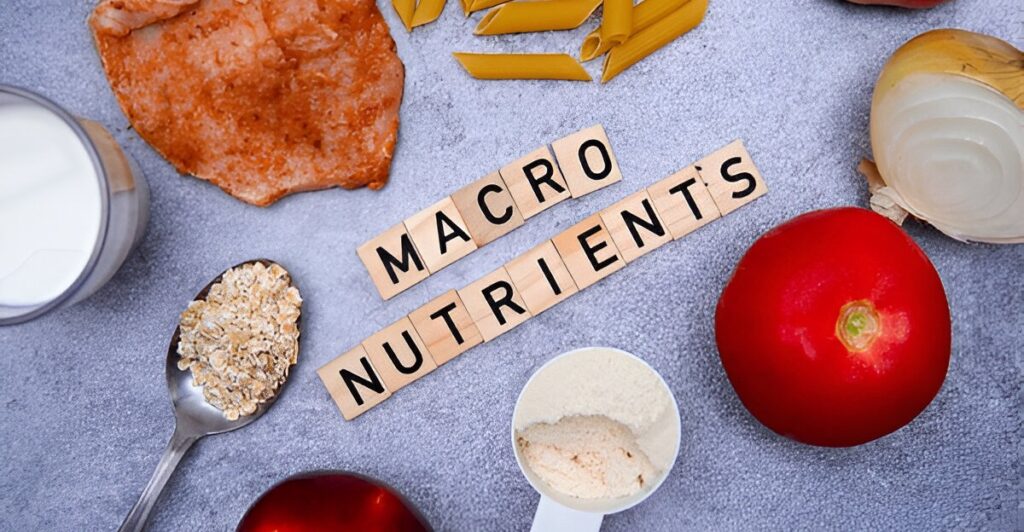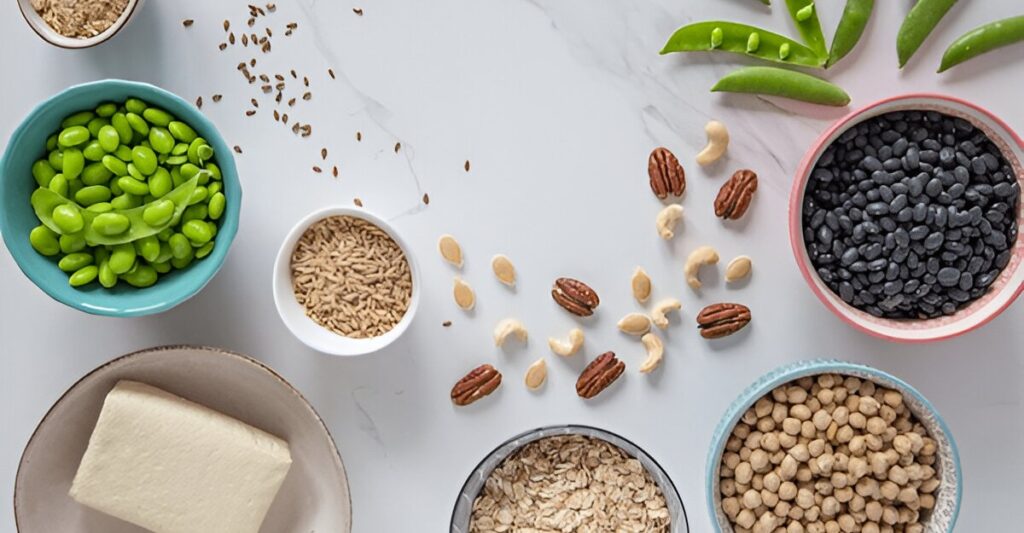Eating healthy doesn’t have to be complicated. One of the simplest and most effective ways to nourish your body is by building a balanced plate at every meal. A balanced plate ensures you’re getting the right mix of nutrients to fuel your day, support your health, and satisfy your hunger. Whether you’re new to nutrition or looking to refine your habits, mastering the basics of building a balanced plate can transform your approach to eating. In this article, we’ll break down what a balanced plate looks like, why it matters, and how to create one with ease.
What Is a Balanced Plate?
A balanced plate is a meal that includes a variety of food groups in appropriate proportions to provide essential nutrients. It typically combines protein, carbohydrates, healthy fats, and vegetables or fruits to create a well-rounded, satisfying meal. The goal of building a balanced plate is to give your body the energy, vitamins, minerals, and macronutrients it needs to thrive without overcomplicating your diet.
Think of your plate as a canvas: each food group adds color, flavor, and function to create a masterpiece of nutrition. By focusing on balance, you can enjoy your favorite foods while supporting your health goals.
Why Building a Balanced Plate Matters
Creating a balanced plate offers numerous benefits for your physical and mental well-being. Here’s why it’s a game-changer:
- Sustained Energy: Combining carbs, proteins, and fats provides steady energy, preventing the spikes and crashes from unbalanced meals.
- Nutrient Diversity: A balanced plate includes a range of vitamins and minerals to support immunity, digestion, and overall health.
- Satiety and Weight Management: Nutrient-dense foods keep you full longer, reducing cravings and overeating.
- Muscle and Tissue Support: Protein and healthy fats aid in muscle repair, hormone production, and cell health.
- Improved Mood and Focus: Balanced meals stabilize blood sugar, enhancing mental clarity and emotional well-being.
Building a balanced plate is a flexible, sustainable approach that works for any lifestyle, from busy professionals to active families.
The Components of a Balanced Plate
To build a balanced plate, include these key components in appropriate portions. Here’s a breakdown of each and why it’s essential:
1. Vegetables and Fruits (Half Your Plate)
Vegetables and fruits should take up about half your plate. They’re packed with fiber, vitamins, minerals, and antioxidants that support digestion, immunity, and heart health. Non-starchy vegetables like spinach, broccoli, or zucchini are low in calories but high in nutrients, while fruits like berries or apples add natural sweetness and energy.
- Examples: Leafy greens, bell peppers, carrots, tomatoes, oranges, bananas.
- Tip: Aim for a variety of colors to maximize nutrient diversity—think a rainbow on your plate.
2. Protein (One-Quarter of Your Plate)
Protein is crucial for building and repairing tissues, supporting muscle health, and keeping you full. It should make up about one-quarter of your plate. Choose lean or plant-based sources to keep your plate balanced and heart-healthy.
- Examples: Grilled chicken, salmon, eggs, tofu, lentils, chickpeas.
- Tip: Include protein at every meal to support muscle recovery and satiety, especially if you’re active.
3. Carbohydrates (One-Quarter of Your Plate)
Carbohydrates are your body’s primary energy source, fueling everything from brain function to physical activity. Opt for complex carbs, which provide sustained energy and fiber, and aim for them to fill about one-quarter of your plate.
- Examples: Quinoa, brown rice, sweet potatoes, whole-grain pasta, oats.
- Tip: Pair carbs with protein and fats to slow digestion and stabilize blood sugar.
4. Healthy Fats (A Small Portion)
Healthy fats support hormone production, nutrient absorption, and brain health. While they don’t need a large portion of your plate, a small amount adds flavor and satisfaction to your meal.
- Examples: Avocado, olive oil, nuts, seeds, fatty fish like salmon.
- Tip: Use fats sparingly—a drizzle of olive oil or a handful of nuts is often enough.
5. Hydration (Don’t Forget Your Drink)
While not technically on your plate, hydration is a key part of balanced eating. Water supports digestion, nutrient transport, and overall health. Pair your balanced plate with water, unsweetened tea, or sparkling water to stay hydrated.
- Tip: Add a slice of lemon or cucumber to your water for a refreshing twist.
How to Build a Balanced Plate: Practical Tips
Now that you know the components, here are actionable steps to start building a balanced plate at every meal:
1. Use the Plate Method
Visualize your plate as a guide. Divide it into sections: half for vegetables and fruits, one-quarter for protein, and one-quarter for carbs, with a small serving of healthy fats. This simple method ensures balance without needing to count calories or weigh food.
- Example: A plate with grilled salmon (protein), quinoa (carbs), a mixed green salad with avocado (veggies and fats), and a side of berries (fruit).
2. Plan Your Meals
Planning ahead makes building a balanced plate easier. Before shopping, sketch out meals for the week, ensuring each includes all the key components. For example, a lunch plan might be a turkey and veggie wrap (protein and veggies) with whole-grain bread (carbs) and hummus (healthy fats).
- Tip: Prep ingredients like chopped veggies or cooked grains in advance for quick assembly.
3. Estimate Portions Visually
No measuring tools? No problem. Use these visual cues to estimate portions when building a balanced plate:
- Vegetables/Fruits: Two handfuls (1–2 cups).
- Protein: A palm-sized portion (3–4 ounces).
- Carbs: A fist-sized portion (1/2–1 cup cooked).
- Fats: A thumb-sized portion (1–2 tablespoons).
These approximations keep your plate balanced without overthinking it.
4. Mix Flavors and Textures
A balanced plate should be delicious and satisfying. Experiment with herbs, spices, and healthy cooking methods (like grilling or roasting) to enhance flavor. Combine crunchy veggies, creamy fats, and hearty proteins for a meal that’s exciting to eat.
- Example: Roasted chicken (protein) with mashed sweet potatoes (carbs), sautéed kale (veggies), and a sprinkle of almonds (fats).
5. Adapt for Your Needs
Your balanced plate can flex to fit your lifestyle, whether you’re vegetarian, gluten-free, or managing a health condition. For example, a vegan balanced plate might include lentils (protein), brown rice (carbs), roasted zucchini (veggies), and tahini dressing (fats). Adjust portions based on activity level—active individuals may need more carbs or protein.
6. Be Mindful When Eating Out
Restaurants often serve oversized portions or unbalanced meals. To stick to building a balanced plate, choose grilled or baked entrées, ask for extra veggies, and request sauces or dressings on the side. Split large portions or save half for later to avoid overeating.
- Tip: Look for menu items labeled “grilled,” “steamed,” or “roasted” for healthier options.
Common Mistakes to Avoid
When building a balanced plate, watch out for these pitfalls:
- Skimping on Veggies: Filling half your plate with vegetables ensures nutrient density and keeps calories in check.
- Overloading on Carbs: Too many carbs can crowd out other nutrients. Stick to one-quarter of your plate.
- Forgetting Fats: Healthy fats are essential for satisfaction and nutrient absorption, so don’t skip them.
- Ignoring Variety: Eating the same foods daily limits nutrient diversity. Rotate proteins, carbs, and veggies for optimal health.
Why Building a Balanced Plate Is Sustainable
Unlike restrictive diets, building a balanced plate is a lifelong habit. It’s flexible, allowing you to enjoy cultural foods, dine out, or indulge occasionally without guilt. By focusing on whole foods and portion balance, you create a framework that supports health without feeling like a chore. Plus, it’s adaptable to any budget—frozen veggies, bulk grains, and affordable proteins like eggs or beans make it accessible.
Conclusion
Building a balanced plate is a simple, powerful way to eat healthier without overcomplicating your diet. By filling your plate with vegetables, lean proteins, complex carbs, and healthy fats, you’ll fuel your body with the nutrients it needs to thrive. Start with the plate method, plan your meals, and experiment with flavors to make every meal delicious and satisfying. Whether you’re a nutrition newbie or a seasoned healthy eater, mastering the basics of building a balanced plate will set you on the path to lasting wellness. Here’s to creating plates that nourish both body and soul!


